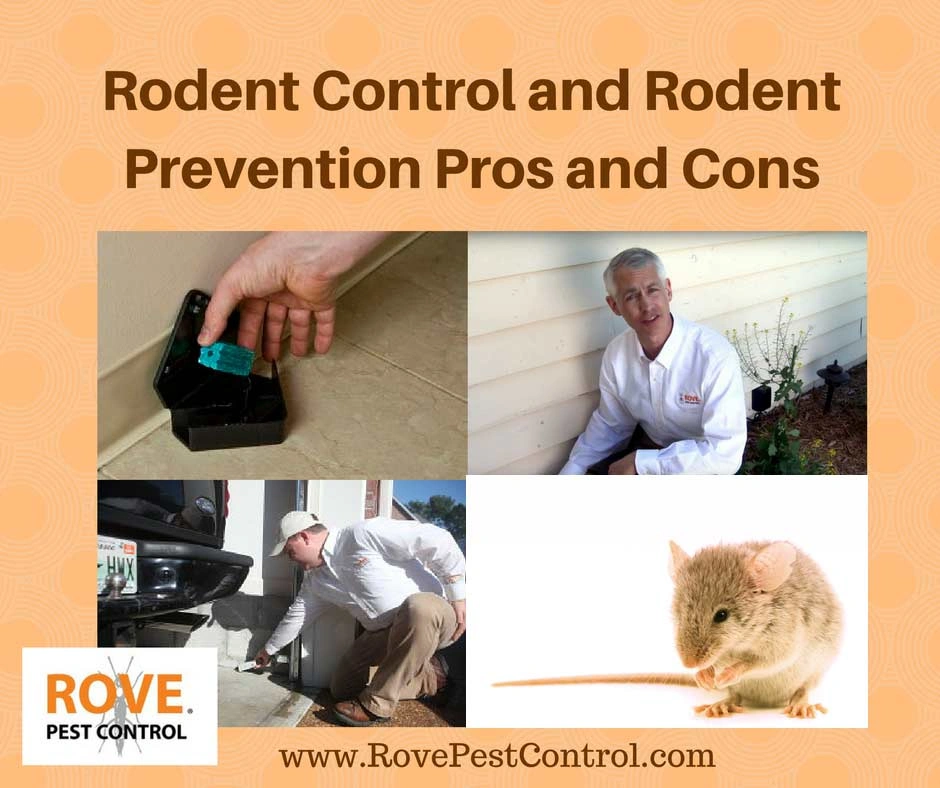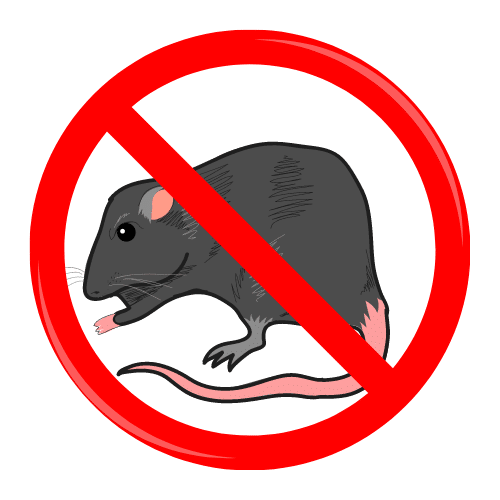Rodent Smoke Test is explored in this insightful blog post today
All Concerning the Rodent Smoke Test: A Proven Method for Identifying Rodent Infestations
The Rodent Smoke Examination acts as a useful diagnostic tool for identifying rodent problems in structures. By using safe smoke, this technique exposes airflow patterns that can indicate possible entry factors. Understanding exactly how the test operates and the advantages it offers can substantially help building owners. The intricacies of preparing for the examination and translating its results are crucial for effective implementation. What vital steps should one think about prior to conducting this test?
What Is a Rodent Smoke Examination?

The examination is particularly efficient in buildings where rodent problems are suspected, as it exposes concealed susceptabilities that may otherwise go unnoticed. The smoke, which distributes easily, will leave through any openings, enabling experts to determine areas that require sealing or repair services.
Inevitably, the rodent smoke examination acts as an aggressive procedure in bug administration, aiding in the prevention of future invasions by making certain that structures are correctly sealed versus undesirable wildlife. This technique highlights the significance of maintaining a secure setting to deter rats efficiently.
Just How the Rat Smoke Test Works
The Rat Smoke Test involves particular prep work steps to ensure accurate results. Understanding how to interpret smoke patterns is essential for recognizing prospective rodent access points. This process offers important understandings right into rodent actions and environment choices.
Examination Prep Work Steps
Efficient preparation is crucial for the effective implementation of the Rodent Smoke Examination. This procedure begins with a thorough evaluation of the facilities to determine potential entrance factors for rodents. Confirming that all vents, windows, and doors are safely closed will stop any type of unplanned escape of smoke during the test. Next off, the area must be free from any kind of things that might obstruct the circulation of smoke or hinder the results. The smoke-generating tool needs to be positioned tactically to make best use of protection of the test area. It is vital to educate residents of the impending examination to assure their safety and security and convenience. Proper preparation establishes the stage for exact lead to identifying rodent invasions.
Translating Smoke Patterns
When conducting the Rat Smoke Examination, interpreting the patterns of smoke is important for identifying hidden rodent pathways. As the smoke is introduced into prospective entrance points, it travels via any type of openings or gaps in the structure. Onlookers ought to keep in mind where the smoke spreads quickly, indicating a direct course preferred by rats. Conversely, locations where smoke remains recommend that the pathway might be blocked or much less often used. Furthermore, the direction of smoke movement can expose hidden nests or burrows. An extensive examination of these patterns permits insect control specialists to pinpoint crucial locations for intervention, making certain an extra reliable eradication method. This technique highlights the relevance of detailed smoke analysis in detecting rodent task.
Advantages of Using the Rodent Smoke Examination
The Rat Smoke Test offers considerable benefits in pest management. Its fast detection technique enables for the rapid recognition of rodent infestations, helping with prompt treatments. Additionally, the non-invasive approach reduces disturbance to the setting, making it an efficient choice for homeowner.
Quick Detection Technique

Non-Invasive Strategy
Lots of insect control techniques can be intrusive and disruptive, the Rat Smoke Examination stands out for its non-invasive nature. This technique uses safe smoke to determine rodent paths without the demand for comprehensive excavation or structural changes. By introducing smoke right into potential entrance points, homeowner can easily observe exactly how it takes a trip and where rodents might be penetrating. This approach decreases disturbance to the setting and existing frameworks, enabling a quick assessment of the problem. Furthermore, the Rodent Smoke Examination is effective in pinpointing problem locations, enabling targeted treatments. Consequently, it not just preserves resources yet also decreases the anxiety commonly associated with more standard bug control approaches, making it an attractive option for lots of.
Recognizing Access Points and Nesting Areas
Determining entry factors and nesting areas is essential in successfully taking care of rodent invasions. Rodents are proficient at making use of little openings, frequently as small as a quarter of an inch. Common entry factors include voids around pipelines, vents, and home windows, in addition to fractures in wall surfaces and foundations. Examining these locations extensively can reveal possible access courses for rodents.
Nesting locations can often be visit this website found in surprise spaces such as attic rooms, basements, go to this site or wall gaps - Rodent Smoke Test. Signs of nesting include droppings, gnaw marks, and shredded products. Making use of an organized technique, residential or commercial property owners should perform routine inspections, concentrating on both exterior and interior locations. Keeping an eye on for indications of activity, such as impacts or hair, can also aid in determining these crucial areas. By identifying entry factors and nesting locations, reliable control steps can be carried out, protecting against more rodent attacks and protecting the residential or commercial property
Planning for a Rat Smoke Test
Getting ready for a rodent smoke examination requires careful planning and interest to detail to assure efficient outcomes. The area needs to be completely inspected to identify potential access points and nesting websites, making specific that all possible locations are covered during the test. Next, the environment should be free from any obstructions or things that may disrupt the smoke's dispersion. It is necessary to secure any kind of determined access factors temporarily, making use of materials such as tape or plastic to avoid outdoors air from watering down the smoke. Furthermore, the smoke source need to be meticulously picked, making sure it is appropriate for interior use and secure for the occupants. Finally, it is recommended to notify any type of building owners about the examination timetable to minimize exposure to smoke and ensure their security. Adhering to these actions will enhance the effectiveness of the rodent smoke examination and provide clearer insights right into potential invasions.
Translating the Results of the Test
Once the rodent smoke examination has been performed, translating the outcomes comes to be essential for understanding the extent of any type of invasions. Rodent Smoke Test. Viewers ought to very closely analyze the areas where the smoke has actually escaped, as this suggests potential entry points for rodents. If the smoke disperses swiftly with openings, cracks, or voids, it represents that these openings may be used by rats for gain access to
Additionally, the existence of smoke in particular locations can recommend nesting websites or paths often passed by rodents. Odorous deposits or dark discolorations left behind can further validate energetic invasions.
It is essential to separate between minor leakages and significant violations. A limited variety of smoke escape points could indicate isolated rodent activity, while widespread dispersal suggests an extra significant problem. Recognizing these results permits homeowner to evaluate the seriousness of addressing the problem and aids guide succeeding activities for effective rodent control.
Following Actions After Conducting the Examination
After analyzing the outcomes of the rodent smoke test, homeowner should take crucial action to deal with any kind of identified problems. If the examination discloses paths used by rats, instant actions need to be used to seal these access points. This may include repairing openings, mounting door sweeps, and reinforcing vents.

Next, residential property owners ought to take into consideration getting in touch with bug control experts to evaluate the severity of the infestation and establish a customized elimination plan. Regular tracking and upkeep must comply with to stop future incidents.
Additionally, it is necessary to remove potential food resources by securing waste and saving food effectively. Building proprietors may additionally intend to perform further assessments to recognize nesting websites or various other indicators of rodent task. By carrying have a peek here out these actions, they can effectively minimize the risks associated with rodent invasions, making certain a much healthier living atmosphere.
Often Asked Concerns
Exactly how Frequently Should I Conduct a Rodent Smoke Examination?
The suggested frequency for conducting a rodent smoke examination varies, yet generally, it needs to be done a minimum of twice a year or after any considerable structural adjustments, ensuring recurring monitoring for possible rodent problems.
Is the Smoke Made Use Of Hazardous to Human Beings or pet dogs?
The smoke made use of in the rodent test is normally thought about safe to animals and human beings when used properly. People must ascertain appropriate ventilation and seek advice from item standards to minimize any type of possible risks.
Can I Conduct a Rodent Smoke Test Myself?
Conducting a rodent smoke test individually is feasible, yet it calls for certain equipment and understanding. Rodent Smoke Test. Correct security precautions need to be followed to assure efficiency and lessen threats to health and property throughout the process
What Should I Do if I See Smoke Escaping?
If smoke leaves during the examination, the person should immediately discontinue the procedure, determine the resource of the leakage, and examine possible access points for rodents. Consulting a specialist insect control solution is encouraged for resolution.
Exist Any Type Of Alternate Approaches to the Smoke Examination?
Yes, different approaches to the smoke examination consist of utilizing infrared electronic cameras to spot warm trademarks, aesthetic examinations for droppings, and utilizing bait stations to monitor rodent task. Each approach offers distinct benefits for determining infestations.
The Rodent Smoke Examination offers as a beneficial analysis tool for detecting rodent infestations in structures. When carrying out the Rat Smoke Examination, analyzing the patterns of smoke is necessary for recognizing covert rodent pathways. A fast and reliable detection technique, the Rat Smoke Test provides substantial advantages for recognizing prospective access factors in structures. When the rodent smoke examination has been carried out, interpreting the outcomes becomes important for recognizing the degree of any type of problems. If smoke gets away during the test, the person needs to right away stop the procedure, identify the resource of the leak, and assess prospective access points for rats.